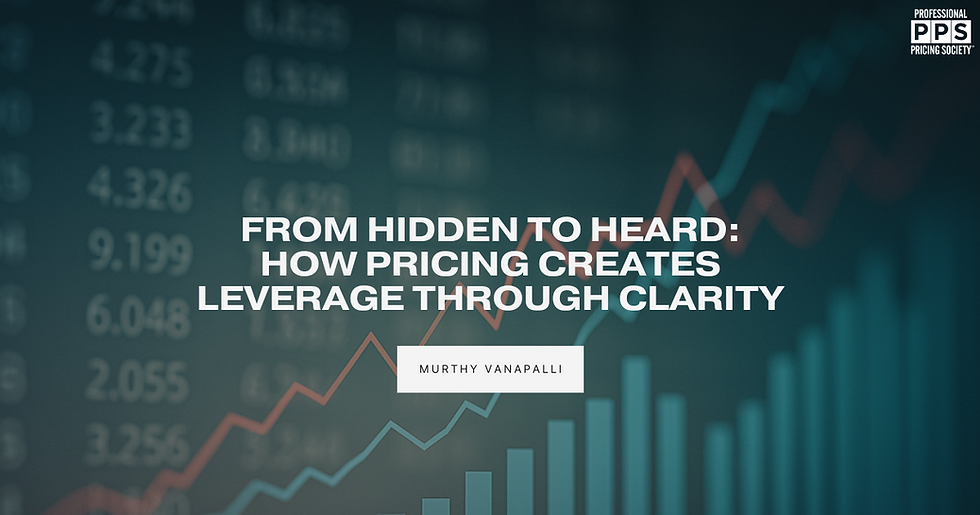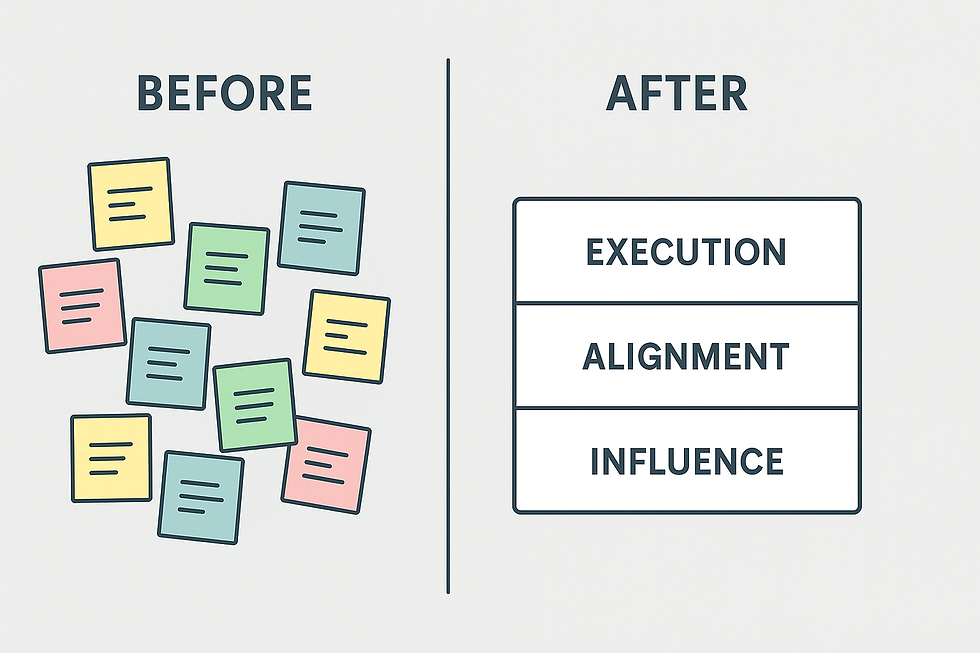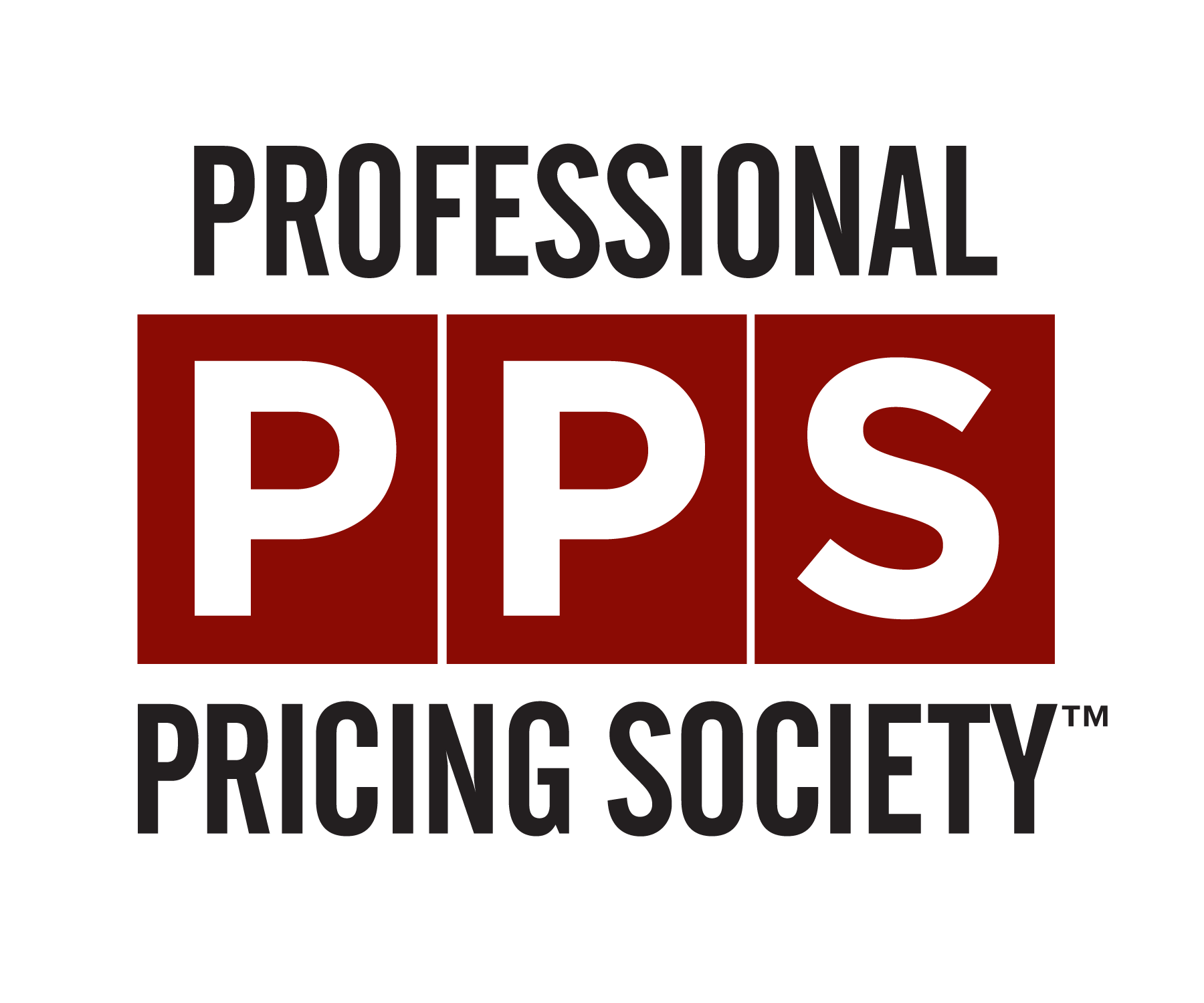Guest Blog: From Hidden to Heard: How Pricing Creates Leverage Through Clarity
- PPS
- Aug 18
- 3 min read

Guest Authors: Murthy Vanapalli
The quarter looked good on paper. Then you discovered 200 tiny exceptions that erased $2M in margin.
Sound familiar? Now picture this: it is 11 PM, the biggest deal of the quarter is on the line, and everyone is looking to you, not just for approval, but for the move that saves both the deal and the margin.
That moment, when pricing shifts from gatekeeper to game changer, separates tactical execution from strategic influence. Most teams never make the leap. They stay buried in rate card updates and override approvals while millions leak away.
The bridge is not more models or top-down mandates. It is something deceptively simple: creating clarity where others see complexity.
Why Clarity Changes Everything
Real pricing influence shows up in moments like:
Turning “we need a 5% price increase” into a segmented plan that prevents 30% of customers from walking
Reshaping “we need 30% off” into a deal that closes without bleeding margin
Walking a top performer through a rewrite, they resisted until they see why it works
Catching the same procurement play in three regions and shutting it down before it spreads

What these have in common is that they replace “no” with better alternatives in the moment of need, and they deliver across three critical areas: execution, alignment, and influence.
If you can master all three, you stop being the person who approves deals and start being the person who shapes them.
Execution: Making the Complex Simple
Sales cannot execute what they cannot explain. If your quote needs a slide deck to justify, it is already dead.
When a rep spends 15 minutes explaining a discount, the prospect tunes out. The best teams make it a 30-second exchange: “Our volume tiers kick in at these thresholds; here is where you land and what extra volume gets you.”

Great pricing leaders put rules in the rep’s hand they can recall mid-call, CPQ guardrails that flash red before margin disappears, and veto power on deals that cross hard thresholds.
Contrarian truth: Your best reps will fight pricing discipline hardest. They are winning despite the chaos, not because of it. Win them over first, and they become your strongest advocates.
Alignment: Translating Intent Into Action
Finance wants control. Sales wants speed. Marketing wants positioning. Without shared definitions of value and tradeoffs, you waste cycles debating while competitors win.
Pricing’s role is translation: field feedback becomes segmentation, finance models match market reality, and marketing narratives align with deal economics.
Best practice: sit in weekly pipeline reviews, not as an enforcer, but as the interpreter who spots patterns sales sees as one-off battles and turns them into systemic fixes.
Influence: Data That Cuts Through Noise
Decision rooms are noisy, and volume often beats logic. Influence comes from telling clean, undeniable stories, like showing retention patterns by discount level, revealing elasticity shifts by segment, or proving that “premium” deals are subsidizing laggards.
One poorly handled “strategic” discount can train a segment to expect 40% off. The reverse is also true: one well-publicized stand can reset expectations across the board.
The Premium Paradox: Your highest-paying customers can destroy more value than your discounted ones. They demand custom features, executive attention, and endless support, costing three times more to serve while everyone celebrates the win. The real profit often sits in your boring middle-tier deals no one fights for.
Building the Bridge
Clarity is earned in the field: shadow calls, sit in reviews, and watch deals unfold. If a salesperson spends 15 minutes explaining what should take 30 seconds, you have found the fracture point where execution breaks.
Winning sales leadership buy-in means addressing three concerns:
Trust in competence: Show up in their meetings, not just send reports
Control versus collaboration: Co-design tools and approval logic so the field sees their fingerprints on the system
Proof of concept: Pilot with top performers and let results speak

Time launches for slower selling cycles to allow space for training and adaptation. Start with leaders already frustrated by pricing inconsistency. They are primed for discipline that does not kill momentum.
The Measurement Question
If you had to pick one metric to prove pricing is creating influence, not just cost control, what would it be and why?
The best answers reveal whether you are measuring outputs or outcomes. That distinction decides if pricing stays a cost center or becomes a growth engine.
Real pricing leadership is not about guarding the gate. It is about owning the map and helping people navigate the terrain.




